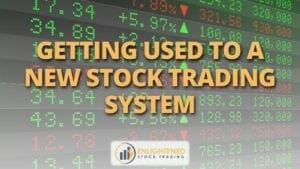Market on open orders (MOO Orders) are an extremely useful tool. They can help you get into the market right at the opening price without having to place a market order immediately when the market opens.
Although not available in all markets or by all brokers, if you have access to them they warrant consideration for inclusion in your trading system.
A MOO order is simply a market order which is placed when the market is closed and which remains dormant until the open. When the market opens the order becomes active.
Once the MOO order becomes active, it behaves exactly like a normal at-market order.

Benefits:
The main benefits of MOO orders is that you do not need to place a market order right at the open to get the opening price. This means that you can design trading systems that enter or exit at the open with some degree of certainty.
This may be useful when you have a full time job or other responsibility that may at times prevent you from being at the computer when the market opens.
Being able to place market on open orders is also useful if you want to trade on some foreign exchanges that are not in your time zone. For example, living in Australia I find that the opening times of the exchanges in the USA and Europe are just not very convenient – something about needing sleep I think! So this type of order could still allow me to design a trading system that uses the opening price to enter or exit the market.
Drawbacks:
The potential drawbacks of market on open orders are similar to standard market orders with one caveat…
… If you are going to place market on open orders and not be present at the open of the market you really do not know what price your order will be filled at. You must ensure you understand the full ramifications of this because markets can move a lot further than you would think over night!
Conclusion:
If they are available for you to use on the exchange and with the broker you use, Market On Open orders can be a helpful tool if used cautiously. They can add flexibility and also provide you with some certainty that your order will be placed at the open just in case you cannot be in front of your computer at the time.
Remember to consider how you will place your stop loss orders also – these are important for protection of trading capital and ensure you don’t lose too much on any one trade.
Regardless of how or why you use different order types, they should all be documented with reasons and instructions in your trading plan to ensure you (or the person placing trades for you) know exactly what you need to do in all situations. Review our discussion on how to build a winning trading plan here.
If you do not yet have a completed trading system then I recommend you read our description of the Trading System Development process before getting started.









Share This
Share this post with your friends!